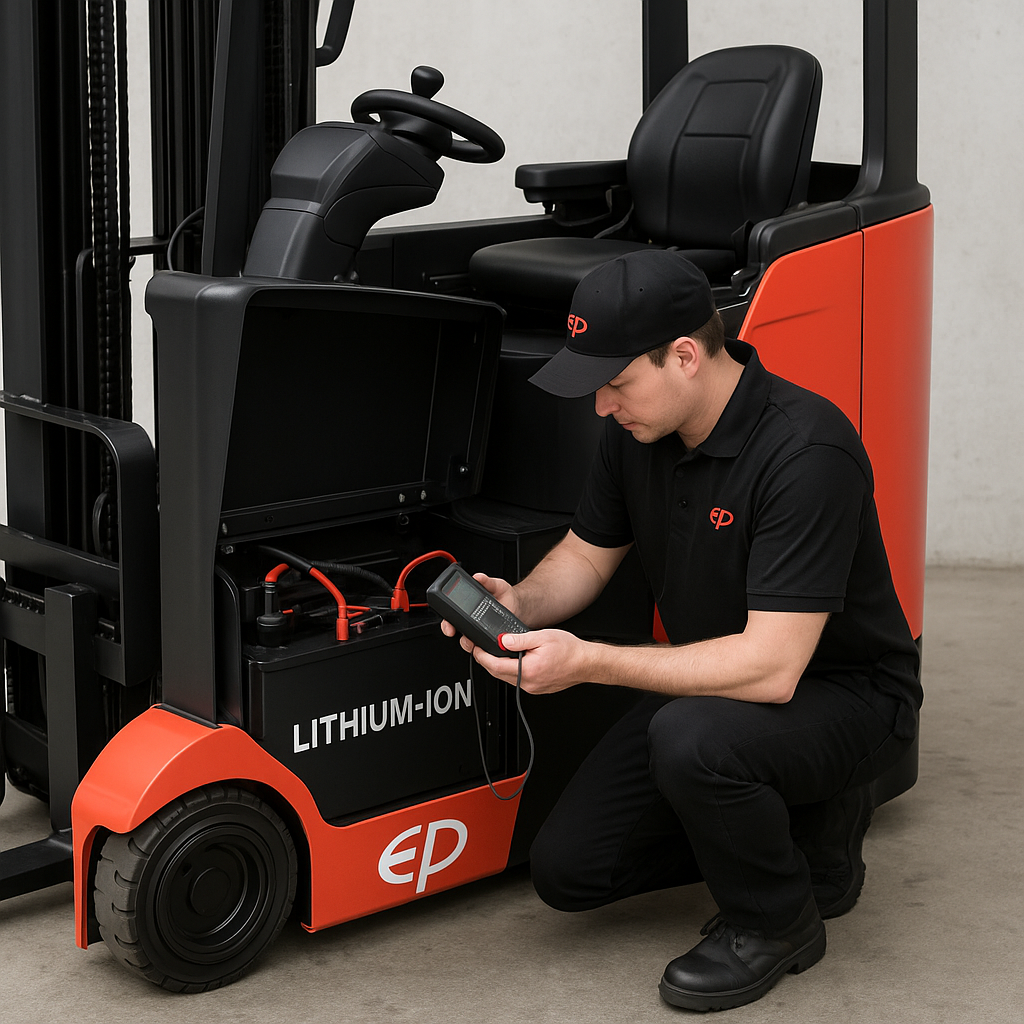How to Check a Faulty Electric Forklift Battery: A Complete and Accurate Guide
When your forklift battery is faulty – what should you do?
When an electric forklift operates unstably or the battery shows signs of damage, follow a scientific inspection process—from basic to advanced steps. Proper inspection helps detect issues early, extend battery life, and avoid sudden breakdowns.
Here are 7 professional steps to check a faulty forklift battery:
1. Visual Inspection of the Battery
-
Battery casing: Check for swelling, cracks, or electrolyte leaks.
-
Battery terminals: Look for oxidation, corrosion, or looseness.
-
Wires and connectors: Inspect for looseness, burn marks, or broken wires.
⚠️ This is a simple but crucial step to ensure safety and good connection.
2. Measure Voltage of Each Cell and the Whole Pack
Use a multimeter to measure:
-
Each cell (for open lead-acid batteries)
-
Whole pack (for sealed or lithium batteries)
If voltage is lower than standard → the cell may be weak, dead, or unbalanced.
✅ Example: A full 24V battery should measure 25.2V – 26.5V.
3. Check the Charger and Charging Current
-
Is the charger working? (LED indicators, fan spinning, current output)
-
Is the charging current within specs? Low current → undercharging → battery degradation
-
Use a multimeter to measure charger output.
4. Check Battery Temperature During Charging or Operation
-
Monitor battery temperature when charging or lifting load
-
Unusual heating may be due to:
-
Internal short circuit
-
Overload
-
BMS malfunction
-
5. Check Electrolyte (for open lead-acid batteries)
-
Use a hydrometer to measure acid specific gravity in each cell
-
Observe electrolyte color:
-
Dark, sedimented, or discolored → sulfation → major performance drop
-
6. Check Battery Management System (BMS – for lithium batteries)
-
Use software or specialized tools to connect to the BMS
-
Check common faults:
-
Weak/unbalanced cells
-
High temperature
-
Circuit interruption
-
Communication errors
🧑💻 Modern lithium batteries usually have built-in BMS that auto shut down on risks—checking BMS is vital.
-
7. Load Test
-
Connect battery to forklift or similar load device
-
Monitor voltage during load lifting:
-
Fast voltage drop → may indicate high internal resistance, weak or degraded cells
-
✅ Conclusion
Regular battery checks are essential, especially when faults arise. Follow these 7 steps to ensure efficient, cost-saving, and safe forklift operation.
For free technical advice, repairs, or genuine battery replacements (lithium or lead-acid), contact a certified battery provider.



